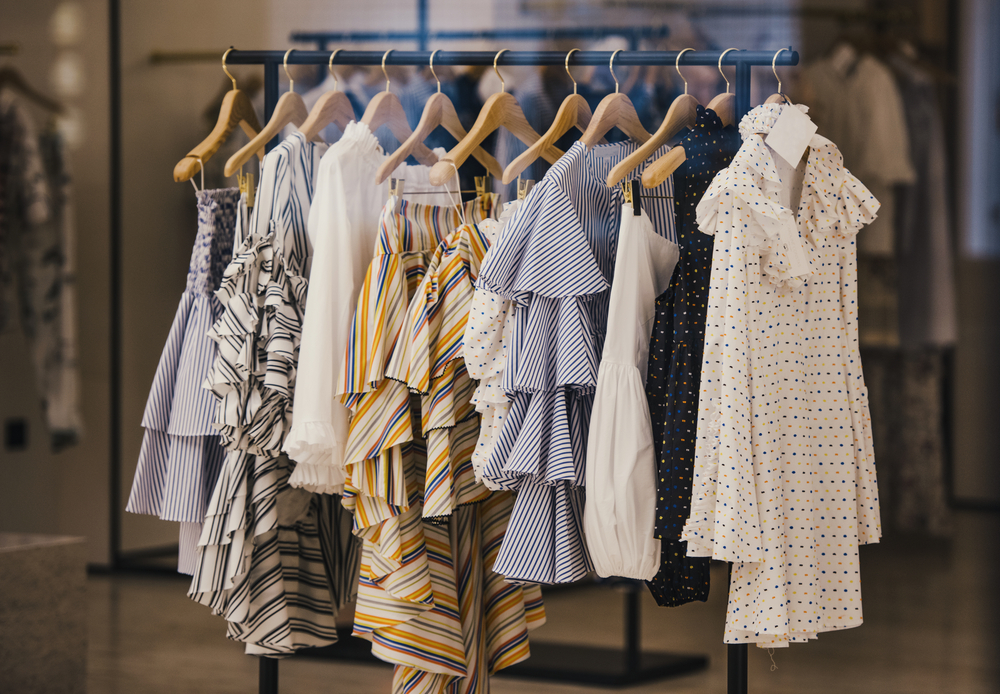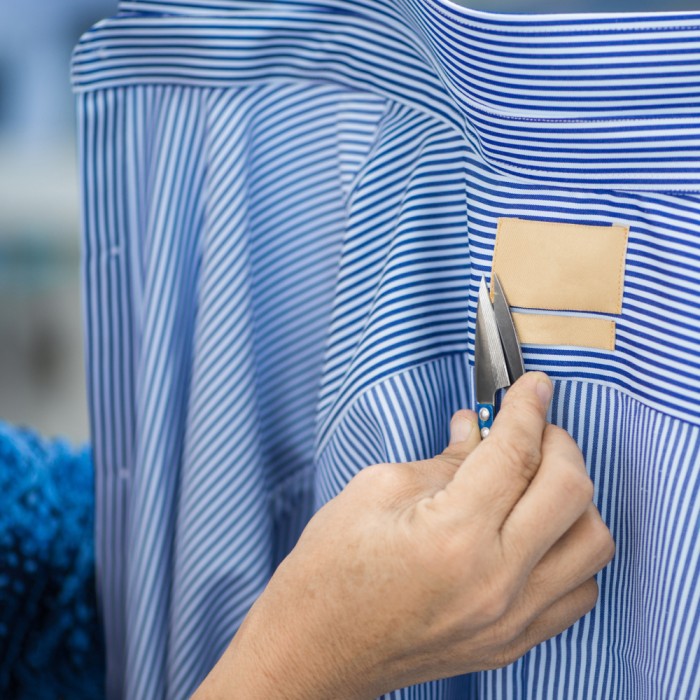Designers Must Look Out for These Manufacturing Errors



Attire designing and manufacturing is a tricky business that needs proper care and attention. You need to be diligent to avoid making cardinal mistakes and excel in this industry.
The value of the global apparel market was evaluated at $3 trillion, with the USA's contribution being approximately $368 billion in 2019. The USA apparel market is growing by the day. Despite an optimistic ecosystem, attire manufacturing is a highly complicated industry. It involves the coincidental functioning of numerous groups to create a thriving industry. Even minor cracks in the collection chain can hinder cargo and cause severe casualties to a business.
Hence, the procedures of a garment factory demand a pre-emptive technique for early identification and rectification of the concerns. Clothing defects or print issues are typical flaws that should be resolved before shipment.
But how to prevent this before the issue snowballs into a huge blunder?
There are several ways to grow your business even with tough competition and several possible hurdles to overcome. The first approach should avoid the common mistakes that can seriously hinder a business's profitability.
Here is a list of the most common mistakes or fabric defects that an apparel designer and investor should avoid.
1. Formation of the Apparel
As a designer, you should know that the formation of attire is an essential part of dress design. So, the designer should make sure that they provide a well-formatted dress sample that should not have any fabric or clothing defects or any other issues. This will enable the manufacturer to process the garments without any hassles. Here are a few significant issues that can come up during apparel creation:
- Sewing defects - Open stitchings and faulty hems can be a big issue while designing a dress. The use of different colour threads on the attire, skipping out hems in between, wrinkling of the apparel, inaccurate thread pressure and raw trims are several sewing flaws that can occur.
- Colour defects - Colour imperfections are discrepancies in the colour of the meticulously created apparel. Ensure that accessories like buttons or brooches are added with care. If you use the wrong colour or variety, the mismatching accessories can affect the look of your designer dress.
- Sizing defects - If your manufacturer does not have proper measurements, preparing multiple dresses can be a hassle. These types of clothing defects can make your customers upset if they cannot find suitable dresses for themselves.
- Garment defects - Imperfections can arise during manufacturing, like loose buttons, defective zippers, uneven hemming, inappropriate buttonholes, bumpy parts, raw edges, inappropriate ornament, and dissimilarities in cloth colours.

2. Defective Patterns in the Apparel
Pattern features are likely to be skipped if the manufacturer does not take care of the correct number of characteristics. If the grade is not accurately labelled, it can result in wrong-sized attires. If the designer has used fabric patterns without checking the face of the pattern, or the designer has used the wrong direction on napped fabrics, flawed patterns can emerge.
When it comes to cutting and sewing, not all dresses satisfy identical orders on a one-way cloth because some designs need loose-fitting, while others require skin-tight fittings. That can lead to confusion for the manufacturer, which causes poor line depiction. It may include uneven printed stripes, uneven chalk, or not powdered, leading to mistaken cutting.
Because of sparse marking (uneven cutting), you will not be able to use the outer edge of the design, or you will not be able to draw a new style due to less space. Also, you will not be able to elaborate your cut piece of fabric into less room, leading to a less effective designer dress. Furthermore, the designer will sketch back from small parts. It will cause experienced operators to supervise the little feature-making as well. And, the full-sized design may have worn-out trims.
In this case, if the designer has marked without setting the cloth or did not set the pleating and wrinkling of the fabric, it can also lead to uneven dress styles. When the wrinkles are too broad and the apparel details are rough, this may lead to a shoddy design.
3. Disseminating Flaws in an Attire
Suppose the designer believes that the manufacturer will not require sufficient plies to shield the number of garments. And, the designer does not give the manufacturer garment pile details. In this case, the manufacturer will mistakenly misalign the piles. This will cause the apparel to be wrongly cut, and the dresses will be uneven.
To better understand how fabric defects affect customers’ choices, take this example:
Assume you bought an uneven design that does not look like the perfect dress you wanted. You will definitely return it. That is why, whether it is a designer dress or a casual one, it should be perfect before going to stores for sale. But when the material is not spread evenly, such as the pattern is face-up, face down, or not face to face as needed, it may result in no sales.
4. Flaws of Cutting While Designing the Fabric
If the designer neglects to feature the sequence of pattern design or prints, or varying size, or some other issue, it can cause a loss in the business. Want to know how? Well, suppose a designer did not consider the design correctly and ignored the minor but essential details like overly deep, excessively shallow, curved, overlooked, or inaccurate suit material. And you saw this dress in the mall with the visible defects. Will you purchase it? The answer will definitely be no. That is why, whether it is the designer or the manufacturer, they have the responsibility to check that the material should not be defective in any case, such as frayed trims and fused or scorched firms. It may lead to a significant loss in sales.
Cutting carefully before stitching the dress is essential for designing a dress. But when cutting is neglected or rushed, it will lead to uneven dress styles like loose fittings or an overly tight dress that does not fit anyone.
5. Common Quality Defects
Here are a few common clothing or fabric quality defects that should be taken care of by the designers as well as manufacturers before shipping:
- Broken threads: Yes. It can be an issue. Sometimes when the workers have a lot of work, they overlook minor mistakes like broken threads. This can be a huge mistake while your dresses will go to stores and are bought by your customers. And they will likely return them, or even they will not accept them if they happen to see the broken threads.
- Uneven pair of dresses: What if you are selling a two-piece top and skirt dress, and they are matched in different sizes? Assume that the upper part is XL and the lower part paired with the dress is L size. This will lead your customer to walk away from the dress instead of buying it.
- Saggy and rolling pockets in the jeans: Jeans are a casual and trendy clothing item for both men and women. But if your customer finds out that your designer jeans have rolling pockets, they will reject them due to inaccurate presentation.
How to Make Sure That These Mistakes Do Not Happen

Here are some points that you focus on to make sure the fabric defects listed above do not happen to your apparel collection.
1. Check out the overall look of the attire
Ensure that you have a team of professional designers and experts who will be able to examine the attire’s overall appearance after designing the dresses. This will help the manufacturer avoid any clothing defects while creating your design.
2. The formation should be right
You should know that your design should be in proper form as a designer. Ensure that the fabric is suitable for your dress design. The pattern should be exact, and the buttons and other accessories should be the same so that they enhance the beauty of the dress.
3. Dress colour should be even
Make sure that the dress material you are using is high-quality to avoid fabric defects. The dress colour should not be faded or unevenly coloured. The colour of every thread should be even.
4. Finishing touch of the attire
Ensure that each aspect of the attire completes its look. Don’t try to mix and match your design if it does not create satisfactory results.
5. Present your final attire by rechecking
Make sure that your team of designers recheck your work to identify every tiny flaw. Take care of these promptly and ensure that they are not repeated.
Check out Fashinza for more information on all things related to the fashion industry.



















